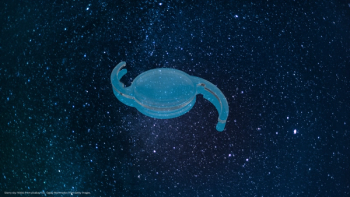
PresbyLASIK versus multifocal refractive IOLs
PresbyLASIK treatment uses the principles of LASIK surgery to create a multifocal corneal surface aimed at reducing near vision spectacle dependence in presbyopic patients. This treatment constitutes the next step in the correction of presbyopia after monovision LASIK.1-3 Among the presbyLASIK techniques, central presbyLASIK 4 creates a central area, which is hyperpositive for near vision leaving the midperipheral cornea for far vision. 5 Positive clinical results of this surgical technique have been recently reported 4 and also tested objectively with a light propagation algorithm. 6
PresbyLASIK treatment uses the principles of LASIK surgery to create a multifocal corneal surface aimed at reducing near vision spectacle dependence in presbyopic patients. This treatment constitutes the next step in the correction of presbyopia after monovision LASIK.1-3 Among the presbyLASIK techniques, central presbyLASIK4 creates a central area, which is hyperpositive for near vision leaving the midperipheral cornea for far vision.5 Positive clinical results of this surgical technique have been recently reported4 and also tested objectively with a light propagation algorithm.6
We recently performed a study comparing the visual outcomes achieved by patients who underwent presbyLASIK with the simulated results that they would have obtained from a multifocal IOL implant, such the Array multifocal IOL.11
A total of 10 hyperopic eyes that underwent central presbyLASIK surgery with Presby-One software (Technovision) using a H. Eye Tech. Technovision excimer laser (Technovision and Bausch & Lomb) platform were included in this study. The mean age was 57 (ranging from 52 to 68) and mean preoperative spherical equivalent was 1.28±0.87 D. The mean value and standard deviation of the distance visual acuity with and without correction were 1.02±0.13 and 0.37±0.15, respectively. All patients had a corneal curvature (SimK) between 40 D and 48 D, a horizontal iris diameter (white-to-white) between 11.5 mm and 12.0 mm, central corneal thickness of no less than 500 μm and no signs of cataract observed using a slit lamp. Pupil diameter ranged from 2.5 mm (photopic conditions) to 6.0 mm (mesopic conditions).
Assessment before presbyLASIK surgery consisted of a complete ophthalmologic examination including topography (CSO topographer; CSO), biometry (IOL master; Carl Zeiss Meditec), pachymetry (Ophthasonic; Technar), and manifest refraction. Distance visual acuity was tested using the decimal scale visual charts at 4 m; uncorrected distance visual acuity and best corrected distance visual acuity were tested under normal light conditions (approximately 90 cd/m2 ) using 100% contrast optotypes. Postoperative follow-up exams took place at one day, one week and one, three and six months after surgery. For the purpose of this study only the six months data was used.
A 1.5 mm circumferential transition zone of gradually changing power connects the portion of the cornea corrected for distance with the region corrected for near. The ablation pattern was performed with proprietary Presby-One software using the H. Eye Tech. Technovision excimer laser platform. This excimer laser uses a flying spot of 0.8 mm with a repetition rate of 50 Hz and an eye tracker system with a mean response time of 10 ms.
Newsletter
Get the essential updates shaping the future of pharma manufacturing and compliance—subscribe today to Pharmaceutical Technology and never miss a breakthrough.













































